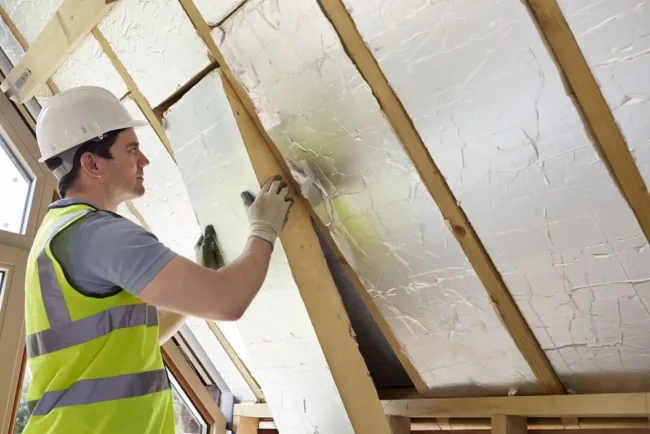
Your home should be a place of comfort, not a source of rising utility bills. But if your energy costs keep creeping up despite consistent thermostat settings, the real issue might be above your head—in the attic. Many homeowners overlook the impact attic insulation has on energy usage, even though it plays a key role in regulating indoor temperature year-round.
In warm, humid regions like Florida, poor attic insulation doesn’t just lead to discomfort—it leads to financial strain. Heat trapped in the attic forces your cooling system to work harder, and without proper insulation, all that effort (and energy) is wasted. If you’re unsure about the condition of your insulation, start by learning how much attic insulation you might need. In this guide, we’ll break down the ways poor attic insulation impacts your energy bills—and what you can do to fix it.
Why Attic Insulation Matters More Than You Think
Attic insulation is one of the most crucial elements in maintaining a home’s energy efficiency. It provides a thermal barrier that keeps heat where it belongs—either inside or outside your home, depending on the season. When insulation is inadequate, your comfort suffers and your energy bills increase.
The Role of Attic Insulation in Regulating Home Temperature
Attic insulation acts as a thermal barrier between your living space and the outside environment. It prevents heated or cooled air from escaping your home, helping maintain consistent indoor temperatures year-round. Without effective insulation, your HVAC system has to work overtime to compensate for the loss, leading to uncomfortable conditions and higher energy consumption.
How Insulation Affects Heating and Cooling Efficiency
Efficient insulation minimizes thermal bridging—the transfer of heat through poorly insulated areas. By reducing energy loss, insulation ensures your heating and cooling systems run less frequently and more efficiently. This directly translates to lower utility bills and reduced wear on your HVAC equipment.
What Happens When Insulation Is Lacking or Damaged?
When attic insulation is inadequate, damaged, or missing in spots, hot and cold air can seep through cracks and gaps. Over time, this not only increases energy bills but can also introduce moisture problems, leading to mold, mildew, and structural damage.
The Hidden Cost of Poor Attic Insulation
Most homeowners notice high energy bills before realizing insulation could be the culprit. Poor attic insulation allows air to escape, forcing heating and cooling systems to run longer than necessary. The longer this continues, the more money and energy you waste.
Why You’re Paying More Every Month
Insufficient insulation allows heated or cooled air to escape, forcing your HVAC system to work harder. The result? Your energy bills gradually climb, even if your thermostat settings stay the same. This energy waste adds up over time and becomes a significant monthly burden.
Increased HVAC Usage and Wear & Tear
Overworked HVAC units are prone to breakdowns and reduced lifespan. Poor insulation causes your system to cycle on and off more often, leading to faster wear and the need for costly repairs or replacements.
Hot and Cold Spots in Different Rooms
Inconsistent insulation coverage can result in some rooms being warmer or cooler than others. This is not only uncomfortable but also indicates that energy is not being distributed efficiently throughout the home.
Local Climate Challenges That Make Proper Insulation Essential
In Florida, weather conditions make proper insulation more than a comfort issue—it’s a necessity. The hot, humid climate and frequent storms contribute to energy loss and moisture buildup in homes with insufficient attic insulation.
How Florida Weather Exacerbates Energy Loss
In Florida’s hot and humid climate, poor insulation can make indoor spaces unbearably warm. High temperatures and constant sun exposure mean your attic can trap heat like an oven, transferring it into your living areas and driving up cooling costs.
Seasonal Energy Spikes Due to Inadequate Insulation
During the summer, energy usage peaks as air conditioners run longer. Without proper attic insulation, these seasonal spikes become more extreme, putting additional stress on your energy budget.
Mold, Moisture, and Other Regional Concerns
Florida’s humidity can lead to condensation in poorly insulated attics. Moisture buildup not only damages insulation but also promotes mold growth—a serious health and structural concern for homeowners.
Common Signs Your Attic Insulation Is Failing
If you’ve noticed changes in home comfort or unexplained energy bill increases, your attic insulation may be underperforming. Here are a few red flags to look for.
Rising Energy Bills Without a Clear Cause
A sudden increase in your energy bill, without changes in usage habits or weather, can signal insulation problems. It often means your home is struggling to maintain indoor temperatures efficiently.
Drafts and Temperature Imbalances
Feeling drafts or experiencing rooms that never seem to reach the right temperature is a telltale sign that your attic insulation isn’t performing.
Visible Deterioration or Rodent Activity in the Attic
Old, torn, or compacted insulation is no longer effective. Evidence of rodents or pests can also indicate damage, as animals often nest in or displace insulation materials.
Energy-Saving Benefits of Upgrading Your Attic Insulation
Replacing outdated insulation is one of the most impactful ways to reduce energy waste in your home. The benefits go far beyond comfort—they include cost savings, improved air quality, and increased property value.
Lower Monthly Bills and Improved Comfort
New, high-performance insulation can dramatically reduce energy waste. A well-insulated attic helps maintain stable indoor temperatures, reducing your need for heating and cooling and lowering your monthly utility costs.
Reduced Strain on HVAC Systems
When your home is properly insulated, your HVAC system doesn’t have to work as hard. This prolongs its lifespan and minimizes the need for frequent repairs or replacements.
Long-Term Value for Homeowners and Property Managers
Upgrading insulation is an investment that pays off through lower bills, increased home comfort, and better resale value. For property managers, it also means more satisfied tenants and lower maintenance issues.
Why DIY Isn’t Always the Smart Choice for Insulation Work
Though it may seem cost-effective, DIY insulation can lead to uneven coverage, safety risks, and code violations. Hiring a local professional ensures the job is done correctly, efficiently, and to code. If your existing insulation is compromised, start with professional attic insulation removal to make way for a fresh, energy-efficient upgrade.
The Risks of Poor Installation or Coverage Gaps
DIY installations often result in missed gaps, uneven coverage, or use of the wrong material for your home’s needs. These errors can negate the benefits of insulation and may cost more to fix later.
Building Code Compliance and Energy Efficiency Standards
Insulation work must meet local codes and energy efficiency standards. A professional knows how to choose the right R-value and materials to match your home and local regulations.
When It Makes Sense to Call a Local Pro
If your insulation is outdated or damaged, it’s best to call experts who can assess and recommend the most effective upgrade.
Meet TLS Energy Savers – Your Local Insulation Experts
Looking for a trusted, local team that understands Florida’s unique home energy challenges? TLS Energy Savers specializes in tailored attic insulation solutions designed for long-term comfort and savings.
Tailored Solutions for Local Homes and Climates
TLS Energy Savers understands the unique climate challenges Florida homes face. Our team tailors insulation solutions to suit your specific property, whether you’re dealing with high humidity, extreme heat, or outdated materials.
What Makes TLS Energy Savers Stand Out in Florida
We offer professional service, modern materials, and honest evaluations. Whether you’re wondering how much attic insulation you need or which type is best for your home, we provide answers and solutions that save money and energy.
How to Book an Inspection or Get a Free Energy Estimate
Our process is simple and transparent. If you’re concerned about insulation or rising bills, our team can inspect your attic and provide a no-obligation estimate. Start by checking out our guide to attic insulation cost.
Take Action Today to Start Saving Tomorrow
If you’ve been dealing with high energy bills, now is the time to take action. Upgrading your attic insulation is one of the most effective ways to improve home comfort and efficiency.
What to Expect During a Professional Insulation Upgrade
After inspecting your attic, professionals will remove old insulation (if needed), seal gaps and leaks, and install the recommended insulation type. The entire process is designed for efficiency and long-term savings.
Simple Steps to Begin the Process
Reach out to a trusted contractor like TLS Energy Savers. Schedule a quick inspection, ask questions about insulation options, and review your cost-saving potential. It’s easier than many homeowners think.
Timeline and ROI: When You’ll Notice the Difference
Most homeowners begin to see lower energy bills within the first billing cycle after new insulation is installed. The investment usually pays for itself in just a few years, especially in energy-intensive climates.
FAQs – What Local Homeowners Ask Before Upgrading Attic Insulation
Q1: How do I know if my attic insulation needs to be replaced?
If your energy bills are rising, you notice uneven temperatures, or see deteriorating insulation in the attic, it’s time to consider an upgrade.
Q2: What type of insulation works best for homes in Florida?
Blown-in cellulose or fiberglass is often ideal for Florida attics because it provides good coverage and resists moisture. Spray foam is another high-efficiency option.
Q3: Can attic insulation really lower my energy bill that much?
Yes. According to Energy.gov, homeowners can save up to 15% on heating and cooling costs with proper insulation and air sealing.
Q4: Will new insulation help with humidity or mold problems?
Absolutely. Proper insulation and sealing prevent moisture intrusion and condensation, which are major contributors to mold.
Q5: How long does it take for attic insulation to pay for itself?
Most upgrades pay off in 2–5 years through energy savings alone, depending on the home’s size, condition, and climate.
